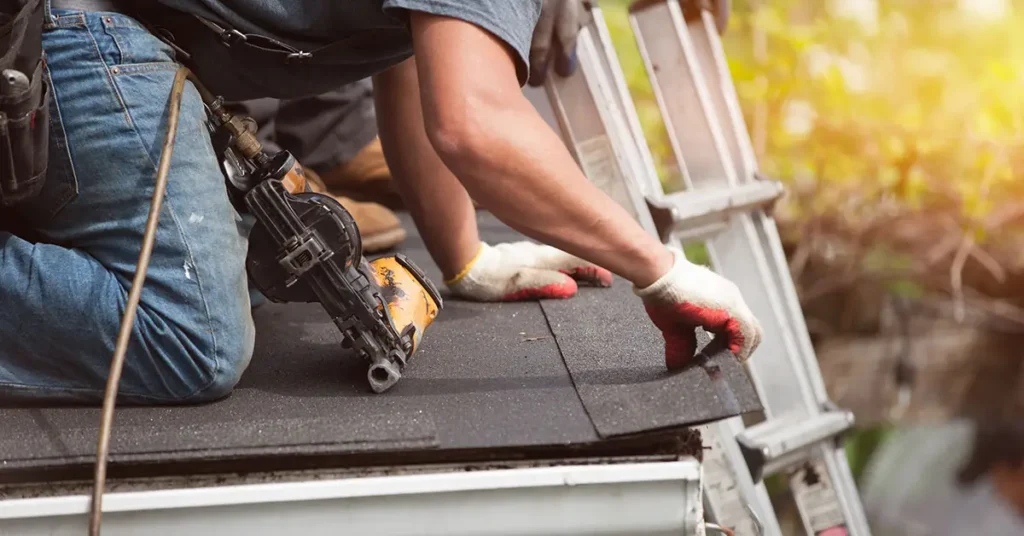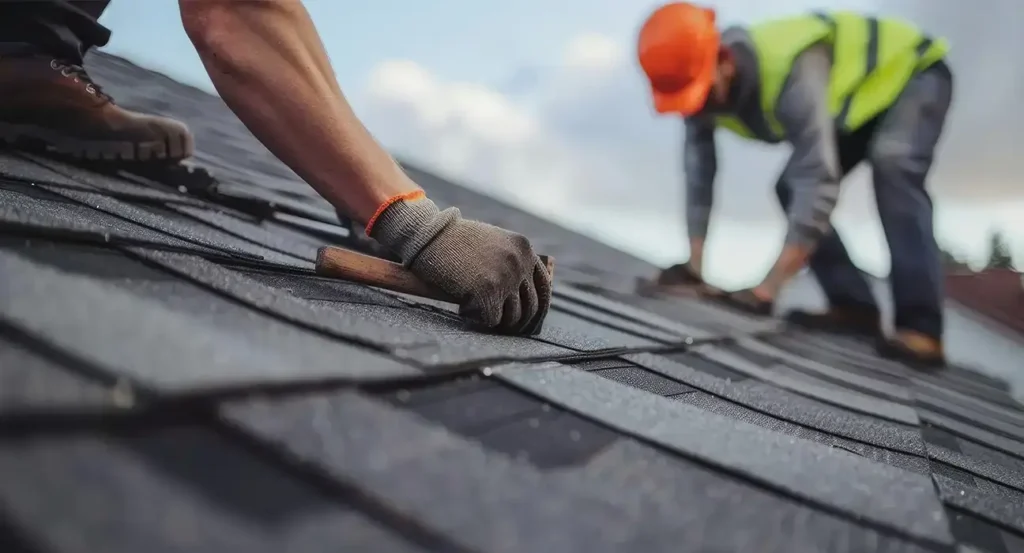Preserving history, protecting your home: Navigating Houston’s historic roofing guidelines for successful renovations.
Honoring the Past, Roofing for the Future: Understanding Houston’s Historic Preservation Framework
Houston, a city that proudly blends its dynamic present with a rich and storied past, is home to numerous historic districts and landmark properties that embody its unique architectural heritage. If you are the fortunate owner of a historic home in Houston, you understand the special responsibility that comes with preserving its character and charm. When it’s time for a roof replacement on your historic gem, the process extends beyond simply choosing new shingles and hiring a contractor. It involves navigating a framework of historic preservation guidelines, permits, and regulations designed to protect Houston’s architectural legacy for generations to come. Understanding these guidelines is not just about compliance; it’s about embracing the spirit of preservation, ensuring your roofing project respects the historical integrity of your home and its neighborhood, and contributing to the enduring beauty of Houston’s historic streetscapes. But what exactly are these historic preservation guidelines in Houston? What permits are required for roof replacement on a historic home? And how can you navigate this process smoothly and successfully? This comprehensive guide will demystify Houston’s historic preservation guidelines for roof replacement, providing you with the essential knowledge to understand the regulations, secure the necessary permits, and embark on your roofing project with confidence and historical sensitivity, ensuring your treasured historic home remains a vibrant part of Houston’s heritage.
Why Historic Preservation Guidelines Matter: Protecting Houston’s Architectural Legacy
Historic preservation guidelines in Houston are not arbitrary rules; they are carefully crafted tools designed to safeguard the city’s irreplaceable architectural heritage. These guidelines serve a vital purpose for both individual homeowners and the broader Houston community:
- Protecting Architectural Character: Guidelines ensure that renovations and repairs on historic homes are conducted in a manner that preserves their original architectural style, materials, and features, preventing the erosion of Houston’s unique historic character.
- Maintaining Neighborhood Integrity: Historic districts are designated for their cohesive architectural and historical significance. Guidelines help maintain the visual harmony and integrity of these neighborhoods, preventing inappropriate alterations that could detract from the overall historic ambiance.
- Preserving Property Values: Historic districts and well-preserved historic homes often command higher property values. Guidelines contribute to maintaining and enhancing these values by ensuring consistent standards of preservation and protecting the desirability of historic neighborhoods.
- Honoring Houston’s History: Historic homes are tangible links to Houston’s past, telling stories of the city’s development and cultural evolution. Preservation guidelines help honor this history, ensuring these valuable resources are not lost to insensitive renovations or neglect.
- Ensuring Responsible Homeownership: Owning a historic home comes with a responsibility to be a steward of history. Guidelines provide a framework for responsible homeownership, guiding homeowners on how to care for and enhance their historic properties in a way that respects their heritage.
Preservation = Community Value: Houston’s historic preservation guidelines are not just about individual homes; they are about safeguarding the collective architectural heritage and community character that makes Houston unique and vibrant.

Guidelines protect Houston’s heritage: They ensure responsible stewardship and preserve architectural character.
Key Areas of Houston’s Historic Preservation Guidelines for Roof Replacement
Houston’s historic preservation guidelines for roof replacement typically address several key areas to ensure historical appropriateness and maintain the architectural integrity of historic homes. Understanding these key areas will help you navigate the guidelines effectively:
Common Focus Areas in Houston Historic Roofing Guidelines
| Guideline Focus Area | Description and Purpose | Examples of Typical Regulations |
|---|---|---|
| Roofing Materials | Specifies which roofing materials are considered historically appropriate for homes within the historic district. Aims to maintain material authenticity. | Often approve slate, clay tile, wood shakes/shingles (with fire retardant), architectural asphalt shingles (in specific styles), and certain metal roofing types. May restrict or prohibit modern materials like standard 3-tab asphalt shingles or brightly colored metal. |
| Roofing Colors | Regulates roofing colors to ensure they are historically accurate and harmonious with the overall architectural palette of the historic district. Maintains visual consistency. | Typically require muted, earth-toned color palettes that are historically appropriate for the architectural styles in the district. May require pre-approval of color samples. May prohibit brightly colored or non-historic color choices. |
| Roof Shape and Pitch | Protects the original roofline and slope, ensuring that roof replacements do not alter the fundamental architectural form of the historic home. Preserves original design intent. | Generally prohibit changes to the original roof pitch or slope. May restrict or prohibit alterations to dormers, gables, or other roofline features unless historically justified. |
| Architectural Details and Features | Addresses the preservation of original architectural details related to the roof, such as details, brackets, decorative shingles, cresting, and other ornamentation. Maintains historic character elements. | Require preservation or restoration of original architectural details. May regulate or prohibit the removal or alteration of historic roof features. May encourage or require the replacement of missing historic details. |
| Accessory Roofing Elements | Provides guidelines for accessory elements attached to the roof, such as gutters, downspouts, vents, skylights, and chimneys, ensuring they are historically compatible and minimally intrusive. | May specify materials and styles for gutters and downspouts (e.g., copper or painted metal). May regulate the visibility and style of vents and skylights, often requiring low-profile or rear-roof placement. May address chimney repointing and cap styles. |
Guideline Focus = Historical Integrity: Houston’s historic roofing guidelines focus on materials, colors, roof shape, architectural details, and accessory elements to ensure that roof replacements maintain the historical integrity of historic homes and districts.
Understanding Your Specific Historic District Guidelines
It’s crucial to remember that Houston’s historic preservation guidelines are not monolithic. Each historic district may have its own *specific* set of guidelines that are tailored to the unique architectural character of that neighborhood. Therefore, the *first and most important step* in any historic roofing project is to:
- Identify Your Historic District: Determine if your home is located within a designated Houston historic district. You can check the City of Houston Planning Department website or contact your local civic association.
- Obtain Your District’s Design Guidelines: Once you know your historic district, obtain a copy of its specific design guidelines for roofing. These are typically available online from the City of Houston or your historic district association.
- Thoroughly Review the Guidelines: Carefully read and understand the roofing-related sections of your district’s design guidelines. Pay close attention to requirements and recommendations for materials, colors, styles, and details.
District-Specific Rules: Houston’s historic districts have *individual* design guidelines. Always consult the guidelines specific to *your* historic district – don’t assume general rules apply.
Materials, colors, shape, and details: Houston’s guidelines cover key aspects of historic roof replacement.
Permitting Process for Historic Roof Replacement in Houston: Step-by-Step
Replacing the roof on a historic Houston home typically requires navigating a permitting process that involves both the City of Houston and, if applicable, the Houston Archaeological and Historical Commission (HAHC). Understanding this process is essential for a smooth and compliant project:
Navigating the Permitting Process: A Houston Historic Roofing Guide
- Certificate of Appropriateness (COA) Application (if in a Historic District):
- Prepare COA Application: Complete the COA application form, available from the Houston Planning Department or HAHC website. Gather required documentation, including:
- Detailed project description outlining the scope of roof replacement.
- Roofing material samples and specifications (manufacturer information, color samples, style details).
- Architectural drawings or photographs of the existing roof and proposed changes (if any).
- Photographs of the home and surrounding neighborhood context.
- Submit COA Application to HAHC: Submit your completed COA application and supporting documentation to the Houston Archaeological and Historical Commission (HAHC). There may be application fees and submission deadlines.
- HAHC Review and Hearing: The HAHC staff will review your application for completeness and compliance with historic district guidelines. Your application will typically be reviewed at a public HAHC meeting. You or your representative may need to attend the meeting to present your project and answer questions.
- COA Decision (Approval, Approval with Modifications, or Denial): The HAHC will issue a decision on your COA application. Approval may be granted as submitted, approved with modifications (requiring you to revise your plans), or denied if the project is deemed incompatible with historic guidelines.
- COA Appeal Process (if necessary): If your COA is denied or approved with unacceptable modifications, there is typically an appeal process. Understand the appeal process and deadlines if needed.
- Prepare COA Application: Complete the COA application form, available from the Houston Planning Department or HAHC website. Gather required documentation, including:
- City of Houston Building Permit Application:
- Apply for Roofing Permit from City of Houston: Regardless of historic district status, you will likely need a standard roofing permit from the City of Houston Inspections and Permits Department. Apply for this permit *after* receiving COA approval (if applicable).
- Submit Permit Application Documents: Gather required documents for the City of Houston roofing permit, which may include:
- City of Houston permit application form.
- COA approval documentation (if applicable).
- Detailed roofing plans and specifications (often similar to COA documents).
- Contractor information (licenses, insurance).
- City of Houston Plan Review and Permit Issuance: The City of Houston Inspections and Permits Department will review your permit application for code compliance and completeness. Once approved, they will issue a roofing permit.
- Inspections During and After Project: The City of Houston will likely require inspections at various stages of the roofing project (e.g., decking inspection, final inspection) to ensure code compliance. Schedule and pass all required inspections.
- Project Commencement and Compliance:
- Begin Roofing Work *After* Permits are Secured: Do not start any roofing work until *all* necessary permits (COA and City of Houston roofing permit) are officially issued and in hand.
- Adhere to Approved Plans and Guidelines: Ensure your roofing contractor strictly adheres to the plans and specifications approved in your COA and City of Houston permits, and complies with all historic district design guidelines.
- Document Project Progress: Keep records of all permits, approvals, inspections, and project documentation. This can be valuable for future reference and for demonstrating compliance if questions arise.
Permitting = Compliance Pathway: Navigating the permitting process, including COA application (if needed) and City of Houston roofing permits, is essential for legal compliance and a historically appropriate roofing project.
Timeline Considerations for Historic Roofing Permits
Be aware that obtaining permits for historic roofing projects in Houston can take longer than standard roofing permits due to the COA review process. Factor in these timeline considerations:
- COA Review Time: The HAHC review process for COA applications can take several weeks or even months, depending on the complexity of the project and the HAHC meeting schedule.
- City of Houston Permit Processing: City of Houston roofing permit processing can also take time, although it is typically faster than the COA process.
- Lead Time for Materials: Historically accurate roofing materials, such as slate or clay tile, may have longer lead times for ordering and delivery than standard roofing materials.
- Seasonal Factors: Weather conditions in Houston can impact roofing project timelines. Plan your project to avoid peak hurricane season or excessively rainy periods if possible.
Plan Ahead for Permits: Start the permit application process well in advance of your desired roofing project start date, allowing ample time for COA review, City of Houston permit processing, and potential material lead times. Proactive planning prevents delays and ensures a smoother project.

COA first, then City permits: Navigate Houston’s historic roofing permit process step-by-step.
Working Effectively with the HAHC and Preservation Organizations
Navigating Houston’s historic preservation guidelines and permitting processes is significantly easier and more successful when you engage proactively with the Houston Archaeological and Historical Commission (HAHC) and local historic preservation organizations. These entities are valuable resources and partners in your preservation efforts:
Partnering for Preservation: HAHC and Houston Preservation Groups
1. Houston Archaeological and Historical Commission (HAHC): Your Regulatory Authority
The HAHC is the City of Houston body responsible for reviewing and approving Certificates of Appropriateness (COAs) for historic district projects. Working effectively with the HAHC involves:
- Early Consultation: Consider scheduling a pre-application consultation with HAHC staff to discuss your roofing project plans *before* formally submitting your COA application. This allows you to get early feedback and ensure your plans are on the right track.
- Clear and Complete Applications: Submit a COA application that is thorough, well-documented, and clearly demonstrates how your project complies with historic district guidelines. Provide all required materials and information.
- Respectful Communication: Communicate respectfully and professionally with HAHC staff and commissioners throughout the process. Be responsive to their questions and feedback.
- Flexibility and Collaboration: Be prepared to be flexible and collaborative. The HAHC may suggest modifications to your plans to better align with guidelines. Be open to reasonable compromises that still meet your project goals while respecting historic preservation principles.
- Attend HAHC Meetings: Attend the HAHC meeting when your COA application is reviewed. Be prepared to present your project clearly and answer any questions from the commissioners.
HAHC = Regulatory Partner: View the HAHC not as an obstacle, but as a regulatory partner in your historic roofing project. Proactive communication and collaboration can lead to a smoother and more successful COA process.
2. Local Historic Preservation Organizations: Your Guidance and Support Network
Organizations like Preservation Houston and your local historic district civic associations are invaluable resources for homeowners undertaking historic roofing projects. They can offer:
- Expert Advice and Guidance: Provide expert advice on interpreting historic district guidelines, selecting appropriate materials, and navigating the COA process.
- Contractor Referrals: Maintain lists of contractors with experience in historic roofing and navigating Houston regulations.
- Educational Resources and Workshops: Offer workshops, seminars, and publications on historic preservation best practices, including roofing.
- Community and Peer Support: Connect you with other historic homeowners in Houston who have undertaken similar roofing projects, providing valuable peer support and shared experiences.
- Advocacy and Representation: Advocate for sound historic preservation policies and represent the interests of historic homeowners in Houston.
Preservation Groups = Valuable Allies: Connect with local Houston historic preservation organizations early in your project planning. They offer a wealth of knowledge, resources, and support to guide you through the historic roofing process.

Partners in preservation: HAHC and local groups offer guidance and support for historic Houston roofing.
Choosing a Contractor Experienced in Houston Historic Roofing Regulations
Selecting the right roofing contractor is paramount for any roofing project, but it’s even more critical when working on a historic Houston home within preservation guidelines. Choose a contractor with specific experience and expertise in:
Essential Contractor Qualifications for Houston Historic Roofing Projects
- Historic Roofing Expertise: Proven track record of successful historic roofing projects in Houston, ideally within historic districts. Ask for references and portfolios of historic work.
- Knowledge of Houston Historic Guidelines: Thorough understanding of Houston historic district design guidelines and the COA process. Inquire about their experience obtaining COAs.
- Experience with Approved Materials: Expertise in working with historically approved roofing materials like slate, clay tile, wood shakes, architectural shingles, and appropriate metal roofing.
- Sensitivity to Historic Techniques: Commitment to using historically appropriate roofing techniques and methods, respecting the craftsmanship of the original roof.
- Permitting and Compliance Assistance: Willingness to assist you with the COA and City of Houston permit application processes, and ensure full project compliance with regulations.
- Strong Communication and Collaboration: Excellent communication skills and a collaborative approach, willing to work with you, the HAHC, and preservation organizations to achieve a successful and historically sensitive outcome.
For resources on finding qualified and reputable roofers for historic homes in Houston, consider exploring guides like Sun Star Roofing’s guide to roofing historic homes in Houston, which may offer contractor selection advice and local recommendations.
Expert Contractor = Regulatory Success: Partner with a Houston roofer who is not only skilled in roofing but also deeply knowledgeable about historic preservation guidelines and permitting processes. Their expertise is invaluable for navigating regulations and ensuring compliance.
Consequences of Non-Compliance: Risks of Ignoring Houston Historic Regulations
Ignoring Houston’s historic preservation guidelines and proceeding with roof replacement without proper permits can have significant negative consequences for historic homeowners:
Risks of Non-Compliance with Houston Historic Roofing Regulations
| Consequence | Impact on Homeowner | Prevented by Compliance |
|---|---|---|
| Stop-Work Orders and Project Delays | The City of Houston or HAHC can issue stop-work orders if work is underway without proper permits or in violation of guidelines, halting your project and causing costly delays. | Obtaining COA and City permits *before* starting work avoids stop-work orders and ensures a smooth project timeline. |
| Fines and Penalties | The City of Houston can impose fines and penalties for unpermitted work or violations of historic district guidelines, adding unexpected costs to your project. | Permitting and guideline compliance avoids fines and penalties, keeping your project budget on track. |
| Required Rework and Material Replacement | If your roof replacement is deemed non-compliant, you may be required to remove non-approved materials and redo the work to meet historic guidelines, incurring significant extra expenses. | Following guidelines from the outset prevents costly rework and material replacement, saving time and money. |
| Negative Impact on Property Value | Non-compliant renovations can detract from your home’s historic character and negatively impact its property value, especially in a historic district where architectural integrity is highly valued. | Compliance enhances your home’s historic character and curb appeal, protecting and potentially increasing its property value in Houston’s historic neighborhoods. |
| Legal Issues and Difficulty Selling | Unpermitted or non-compliant work can create legal issues and make it difficult to sell your historic home in the future, as buyers may be wary of unpermitted renovations. | Permitting and compliance ensure clear legal standing for your renovations, facilitating future property transactions and avoiding potential legal complications. |
| Damage to Historic District Integrity | Non-compliant renovations, even on a single home, can cumulatively erode the historic character of the entire district, diminishing the neighborhood’s unique appeal and sense of place. | Compliance contributes to the collective preservation of Houston’s historic districts, benefiting the entire community and maintaining the city’s architectural heritage. |
Compliance = Risk Mitigation: Ignoring Houston’s historic roofing regulations carries significant risks – financial penalties, project delays, property devaluation, and damage to the historic character of your home and neighborhood. Compliance is essential for responsible historic homeownership.
The Rewards of Compliance: Preserving History and Enhancing Your Houston Home
While navigating historic preservation guidelines and permits may seem like an extra layer of complexity, embracing this process offers significant rewards for Houston historic homeowners. Compliance is not just about avoiding penalties; it’s about actively contributing to the preservation and enhancement of your home and neighborhood:
Benefits of Working Within Houston’s Historic Roofing Guidelines
| Benefit | Homeowner Advantage | Community Advantage |
|---|---|---|
| Preservation of Historic Character | Ensures your roof replacement enhances and protects your home’s unique historical character, preserving its architectural integrity for generations to come. | Contributes to the overall preservation of Houston’s architectural heritage, maintaining the city’s unique identity and cultural richness. |
| Enhanced Curb Appeal and Home Value | Historically sensitive roofing enhances your home’s curb appeal and desirability, potentially increasing its property value in Houston’s competitive historic home market. | Strengthens the attractiveness and desirability of Houston’s historic districts, fostering community pride and attracting investment in historic neighborhoods. |
| Long-Term Durability and Quality | Guidelines often encourage or require the use of high-quality, durable roofing materials that are appropriate for historic homes, ensuring a long-lasting and reliable roof. | Promotes sustainable preservation practices by encouraging the use of durable materials that reduce the need for frequent replacements and conserve resources. |
| Smooth Permitting Process and Avoided Delays | Proactive compliance and engagement with the HAHC and City of Houston can streamline the permitting process and minimize project delays, leading to a more efficient and less stressful renovation. | Ensures a predictable and transparent regulatory environment for historic homeowners, fostering responsible preservation practices and community cooperation. |
| Personal Satisfaction and Legacy | Knowing you’ve undertaken a historically responsible roof replacement and contributed to preserving Houston’s heritage provides immense personal satisfaction and a sense of lasting legacy. | Cultivates a culture of historic preservation and responsible stewardship in Houston, inspiring future generations to value and protect the city’s architectural treasures. |
Compliance = Preservation Rewards: Working within Houston’s historic roofing guidelines is an investment in your home’s long-term value, the preservation of Houston’s heritage, and the enduring beauty of our historic neighborhoods.
Your Guide to Historic Roofing Success in Houston: Plan, Partner, Preserve
Replacing the roof on your historic Houston home is a significant undertaking, but by understanding and embracing historic preservation guidelines, you can transform this project into an opportunity to enhance your home’s beauty, protect its legacy, and contribute to the enduring charm of Houston’s historic districts. Plan your project meticulously, partner with experienced professionals and preservation authorities, and prioritize historical accuracy and compliance at every step. The result will be a roof that not only shelters your home but also stands as a testament to your commitment to preserving Houston’s rich architectural heritage. Embrace the process, celebrate the history, and take pride in knowing you are playing a vital role in safeguarding Houston’s unique legacy for the future. Begin your journey towards a historically sound and stunning roof today, and become a steward of Houston’s architectural treasures.
Key Takeaways for Navigating Houston Historic Roofing Guidelines
Remember these essential points as you plan and execute your historic roof replacement in Houston:
| Key Takeaway | Actionable Advice |
|---|---|
| Understand Your District’s Guidelines | Obtain and thoroughly review the specific design guidelines for your Houston historic district. |
| Start the COA Process Early | Begin the Certificate of Appropriateness (COA) application process well in advance of your project start date. |
| Partner with HAHC and Preservation Groups | Engage proactively with the Houston Archaeological and Historical Commission (HAHC) and local preservation organizations for guidance and support. |
| Choose an Experienced Contractor | Select a roofing contractor with proven expertise in historic roofing and navigating Houston regulations. |
| Prioritize Compliance at Every Step | Ensure every aspect of your roofing project, from material selection to installation, fully complies with historic guidelines and permit requirements. |
| Preservation is a Rewarding Investment | View compliance not as a burden, but as an investment in your home’s value, Houston’s heritage, and your own legacy as a responsible historic homeowner. |
Preserve with Purpose: Working with Houston’s historic roofing guidelines is your pathway to a successful, compliant, and historically sensitive roof replacement that protects your home and honors Houston’s rich architectural heritage.





